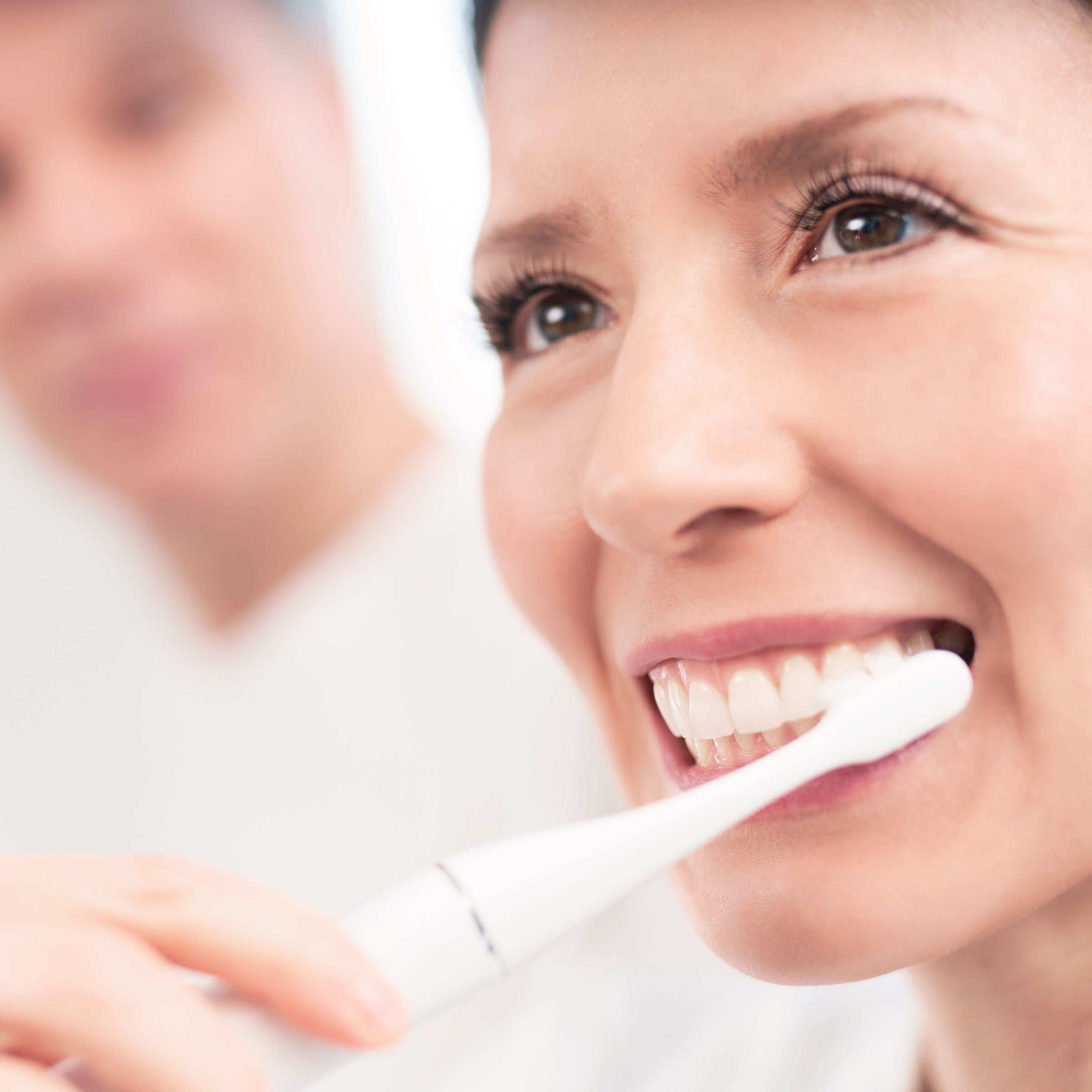Plaque – small, sticky, dangerous: Why dental plaque is a real health risk

Plaque: Invisible but not harmless
Plaque sounds harmless—like something you just "brush away" in the morning. However, this soft, barely visible dental film is one of the main causes of cavities and gum diseases. What exactly plaque is, how it forms—and why its removal is so crucial for your oral and overall health, you will learn here.
What exactly is plaque—and where does it come from?
Plaque is a thin, sticky biofilm that constantly forms on our teeth. Just a few hours after brushing, the first layers form from saliva components and bacteria—especially in hard-to-reach areas like:
-
the gumline
-
between the teeth
-
behind the molars
-
on rough filling edges
If this film is not removed, it continues to grow, making it increasingly difficult to remove.
Why plaque is dangerous
1. Risk of cavities
Bacteria living in plaque convert sugar from our food into acids. These attack the enamel, deplete it of minerals, and make it porous. Conclusion: The well-known "cavity" forms.
2. Gum inflammation (Gingivitis)
Plaque tends to accumulate at the gumline. There, it irritates the tissue, which can lead to redness, swelling, and bleeding gums. If not removed, it can develop into periodontitis—a deep-seated inflammation that damages the supporting structures and bone.
More than a mouth issue: How plaque can affect the entire body
Untreated inflammations in the mouth can negatively impact overall health. Bacteria and inflammatory substances from periodontitis can enter the body through the bloodstream.
Possible effects:
-
Cardiovascular diseases: increased risk of heart attack and stroke
-
Diabetes: periodontitis can worsen blood sugar levels
-
Pregnancy: increased risk of premature birth or low birth weight
-
Immune system: persistent inflammations weaken the body's defenses
In short: Healthy teeth are part of a healthy body.
Infobox: Typical plaque traps in the mouth
Plaque especially likes to hide here:
-
Spaces between teeth (especially with closely spaced teeth)
-
Gumline
-
Backsides of molars
-
Inner surfaces of lower front teeth
-
Transitions between tooth and filling
-
Areas around fixed braces or retainers
Tip: These zones deserve special attention when brushing.
Why plaque removal is often underestimated
Although it sounds simple, plaque is often not completely removed for the following reasons:
-
Many areas in the mouth are hard to reach.
-
Manual toothbrushes are often used too briefly or incorrectly.
-
Plaque remains in the interdental spaces and along the gumline.
-
Cleaning is especially challenging with fixed braces or closely spaced teeth.
That's why dental care aids are useful to help you with thorough cleaning.
Why sonic toothbrushes? Noticeable technology, easy application.
Many who switch to a sonic toothbrush say:
“My teeth feel much smoother – and that's after just a few days.”
Why?
-
Sonic toothbrushes generate tens of thousands of micro-movements per minute.
-
Toothpaste, saliva, and water form a dynamic fluid stream.
-
Cleaning is done without pressure, simply by guiding the brush.
-
Timer functions help to clean all areas evenly.
Advantages at a glance:
-
Effective plaque removal even in interdental spaces.
-
Gentle on gums and enamel – no scrubbing.
-
Structured, time-saving routine.
-
Especially pleasant for sensitive gums.
-
Noticeably smoother teeth and a fresh mouthfeel.
Conclusion: Plaque is invisible – but its consequences are not.
Plaque is not a minor issue – it's a central risk to your oral and overall health. Removing it regularly, gently, and with the right technique effectively protects against cavities, gum inflammation – and their effects on the entire body.
Curious about how it can be easier?
Our sonic toothbrush helps you gently and reliably remove even stubborn plaque – for noticeably cleaner teeth and a good feeling every day. Discover now.
(c) Written by Dr. med. dent. Denise Busche, WhyteDOT. Dentalcare




Comments